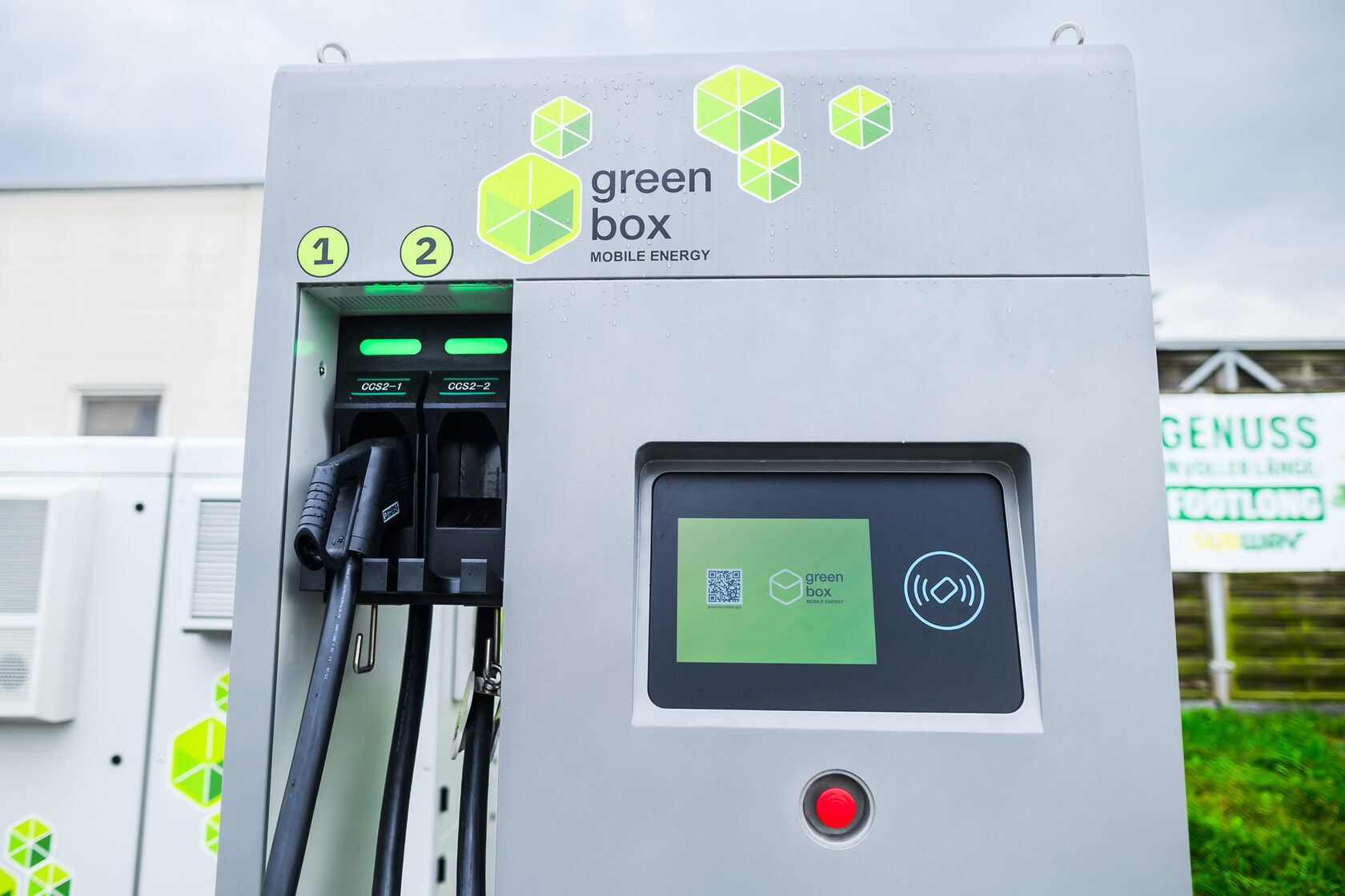Greenbox and Staex build secure mobile EV charging infrastructure
Summary
The expansion of EV charging and hydrogen fueling infrastructure lags behind demand. In view of the sharp rise of climate-friendly vehicles this trend will continue to intensify in the coming years. Reasons among others are cost and time intensive approval processes, construction measures, delivery bottlenecks and resulting investment risks. With regard to hyperchargers it is foreseeable that a location-based overload of the power grid will pose an additional problem.
Greenbox solves these problems by operating a system of hyperchargers (Green Electricity) and green H2 fueling stations which are supplied with mobile storage systems from local green energy sources instead of being connected to the grid. Staex provides secure and stable connectivity for these devices over unreliable networks and direct access to valuable ModBus data.

About Greenbox
Greenbox Mobile Energy enables the rapid transformation towards emission free mobility by supplying the required energy to the place where it is needed. The company's system of charging stations, refueling infrastructure and mobile storage systems is designed to offer green energy completely off grid operated through a smart and AI-ready logistic software.
The problem
Operating IoT devices in the field — unlike servers in a datacenter — often involves getting some data from them to the server. For mobile EV chargers this is the data obtained via ModBus from the charger's computer. ModBus protocol is not encrypted and its endpoint is only reachable from within EV charger's internal network. In addition to that GPS coordinates of the charger need to be reported to the server.
The solution

Staex was installed on the router equipped with a SIM card provided by our partners. The router was placed inside each charger and was connected to the internal computer to get access to the ModBus endpoint. The endpoint was securely connected to the main server directly as a dependent node. The GPS location was provided by the router itself. OCPP traffic was also routed through Staex network. Staex ran directly on the router and on the server that collected all the data, the internal computer did not need to run Staex.
The internal computer exposes management interface via ModBus-TCP protocol. Usually chargers' computers are capable of running a VPN, however, chargers' manufacturers do not recommend touching these computers unless you have a problem with the charger. Therefore, the reasonable approach here is to ingest ModBus-TCP traffic into a VPN and then forward it to the main server.
Why Staex?
Greenbox uses Staex to remotely access, manage and monitor mobile EV chargers and batteries deployed in off-grid locations. Each charger and each battery is attached with the router that runs Staex software. The router connects to the charger/battery via ModBus interface that is securely tunneled over Staex network to the backend server, and the backend server can directly control each battery/charger, track its GPS coordinates and perform IT maintenance tasks (e.g. install OS security updates).
Other companies provide only VPNs which data usage is too high for mobile networks. We provide both the VPN specifically optimized for low data usage (almost silent when idle) and resource-constrained devices, and the platform to run industry-specific applications directly on the devices.
We are thrilled to work with Staex to bring our hyperchargers and H2 fueling stations to even more clients ranging from fueling stations to retailers. Staex's expertise in secure and stable connectivity will ensure that our customers can rely on our service, even in areas with unreliable networks.

As the world becomes increasingly dependent on machines' infrastructure, it is crucial that we have a secure and reliable energy charging infrastructure in place. We are excited to be working with Greenbox to make EV charging and H2 fueling accessible to more people, no matter where they are. We are also working to ensure that the solution can be easily integrated into existing systems, making it a cost-effective option for organizations looking to upgrade their green infrastructure.

Staex proved to have smaller data usage than other VPNs and provided direct access to IoT devices. All the legacy protocols were securely routed over Staex network to the main server.
Ready to get started?
Talk to our tech team.
Contact us